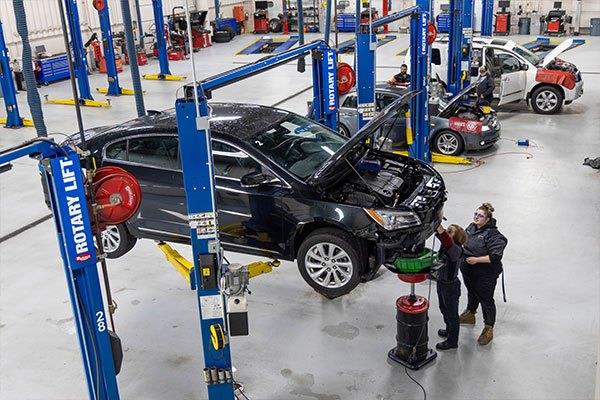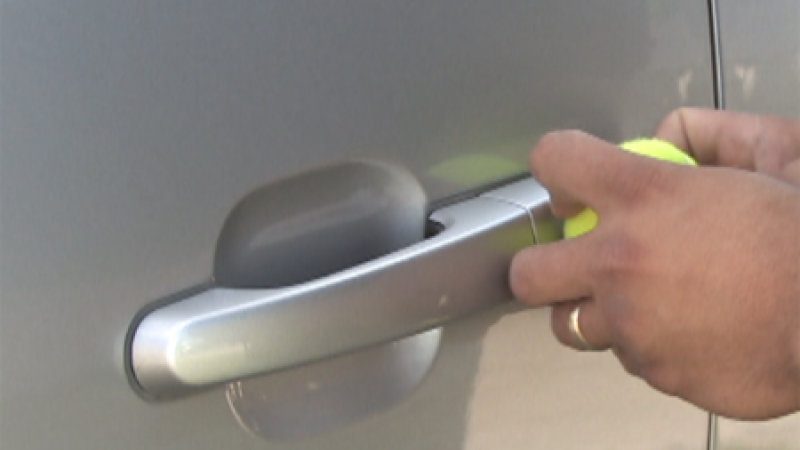
You should be careful when using a car cleaner. You should avoid using acidic cleaners or pH-balanced cleaners. It is important to thoroughly wash and dry your vehicle. Avoid using household cleaners. These precautions are meant to protect the paint surface. Here are some tips to help you choose the right car cleaner. You can now choose the best car cleaning product for your car by reading these tips.
Take care
Be sure to use a specialized product for cleaning the interior of your car. Hydrogen peroxide is an excellent choice to disinfect cuts, scrapes and other small areas. However, it is not the best product for cleaning the Nissan's interior. Although industrial/exterior cleaning products can be used to remove graffiti and stains from walls or other areas, they are not recommended for Nissan's interior. An alternative is isopropyl ethanol, which is readily available at most grocery and supermarket stores. To prevent interior damage, this product should be mixed with 70% alcohol.

Use neutral cleaners
Acidic cleaners should be avoided if you want your wheel to look amazing. Acidic cleaners damage the wheels' clearcoat, and expose them for the elements. This can lead to white spiderwebs and damage to the wheel's overall appearance. Acidic washing may cause damage to your machine-faced tires, which will require them to be recut. Regardless of what kind of wheel you have, you should avoid using acidic cleaners as these will damage your wheels.
Avoid pH-balanced cleaners
Car cleaners that are pH balanced can remove grease, dirt, and other deposits, but not cause damage to your vehicle. This is because different types and pH values of chemicals can cause cleaning products to react differently. Some examples of pH-balanced car cleaners include Royal Clean, AC-80, and Wheel Cleaner. When it comes to cleaning your vehicle, pH is not everything. Here are some tips to help you choose the right cleaning product for your vehicle.
Dry your car with a hair dryer
A hair dryer can be a great way to quickly dry your car. The power of the hair dryer will quickly dry your automobile without scratching or leaving lint behind. Because microfiber towels don't leave any lint behind, they are ideal for drying cars. Chemical Guys microfiber dryer towels are also great because they can be used to buff and polish your car. Microfiber dryer towels can be machine washed after drying.
Avoid rubbing dirt into the paint
Your car should be washed on a regular basis in order to prevent the paint from drying out. It should be washed once a week. Be sure to use a soap that will not damage the paint. And wash the wheels separately with a separate rag to avoid rubbing brake dust into the paint. These are just a few other ways to maintain the car's paint job. Continue reading to learn more.

Clean your car with a professional detailer
Hire a professional detailer to get your car looking its best. Professional detailers have the training and tools to clean and protect your vehicle. They might charge you more than you think. A flat rate may be charged by some detailers, but it is typically indicative of a lower end detailer. The majority of professional detailers will quote a price range. Some details include glass cleaning, hand washing, and a thorough exterior wash.
FAQ
Does it matter what college I go to?
Not really. There are no differences between colleges when it comes to getting into the automotive industry. You will find that some schools offer better programs than others. If you are looking for something more specific, consider going to another school.
Are you looking for a career as an automotive mechanic?
If you are determined to excel, the automotive industry offers many opportunities. You can only succeed in this field if you work hard and learn from others.
Communication skills are important as customers and coworkers will often be your main focus. It is important that you are willing to travel, work long hours and be able to commute.
Take classes at community colleges or universities if you're interested to work in automotive. Many schools offer programs specific to students interested in sales, auto repair, or customer service.
Studying mechanical engineering is an option if you're interested in pursuing a degree. It is possible to earn a bachelor’s degree in only four years.
Many employers will also hire graduates straight from school. So it's wise to start looking for employment while you still have the chance to study part-time.
After you've finished your education, it's likely that you'll need to go through some training before you can be hired as an auto technician.
You will need to pass the Automotive Service Excellence certification exam. This test covers engine maintenance and brakes as well as suspension.
After passing the ASE test you can apply for a National Institute for Automotive Service Excellence (NIASE) license.
A license allows you to perform repairs on vehicles owned by private individuals. Based on the services rendered, you will receive compensation.
It is important to remember that not all states require licensing. However, licensing is required for anyone who plans to work outside the home state.
Some states don’t issue licenses until a certain amount has been completed. This could be you.
How do I prepare for a mechanic apprenticeship?
It is important to have an understanding of what you are going into. You must understand the workings of cars. This way, you know where to start when you go on your first day at the garage.
Also, you need to know how fix simple problems, such as tires and lights that aren't working.
This should help you learn how to diagnose issues and repair them yourself.
Also, it is important to know how parts fit together so that you can put them back together.
And finally, you must know how to use tools safely and efficiently.
These are all things that will make you a competent mechanic.
What is the distinction between a mechanic or an automotive technician?
Both are related, but they are not the same. A mechanic repairs cars and an automotive technician performs maintenance.
A mechanic needs to be able and quick to use their manual dexterity. They must also be able to diagnose problems accurately and repair them effectively.
An automotive technician needs to be more technically skilled than a mechanic. They must be capable of reading blueprints and using tools such as drills, wrenches, etc.
They must also be able to carry out complex procedures safely. They must also be familiarized in different types and electrical systems.
They must also be capable of understanding how parts interact.
As a result, a mechanic usually earns less money than an automotive technician. However, both careers offer great opportunities.
Statistics
- Apprentice mechanics earn significantly less hourly than mechanics who have completed training, with a median wage of approximately $14.50 an hour, according to PayScale. (jobhero.com)
- According to the BLS, total auto technician employment is expected to exceed 705,000 by 2030. (uti.edu)
- 52% of Mechanics in the United States think their salaries are enough for the cost of living in their area. (indeed.com)
External Links
How To
How to correctly diagnose your vehicle for repairs
The symptoms of your vehicle are the first thing you need to look at in order to determine whether it is in dire need of repairs. Next, you can follow these steps in order to diagnose your car.
-
Check engine lights. Check the dashboard light indicators such as the engine light indicator, the oil pressure gauge, the battery light indicator, the coolant temperature gauge, and the RPM gauge. If any of them have been flashing for several days, it may mean something is wrong with your vehicle.
-
Inspect the tire treads. Tires with worn treads could cause problems when handling or braking. The treads of the wheels should be inspected as well. They should look clean and be smooth. The best way to do this is to remove the wheels and take them off. You can check the tread wear with a flashlight.
-
You should always monitor the level brake fluid. Keep track of the brake fluid level in your vehicle. This helps ensure that your brakes operate properly. Low brake fluid levels could cause your brakes to fail when you apply pressure.
-
You should test the suspension system. A suspension system is designed to absorb vibrations and shocks. It allows for better control, smooth acceleration, and deceleration. Your vehicle might feel wobbly, or shake uncontrollably if it has a bad suspension. Try putting some weight on your front or rear axle to determine if you have a suspension problem.
-
Examine the steering wheel. The steering column is used to link the steering wheel with the rest of vehicle's components. Many accidents can cause damage to steering columns. Replace it if your steering column feels loose or unsteady.
-
Pay attention to the exhaust pipe. The exhaust pipes are responsible for moving gases from the combustion chamber into the atmosphere. If the exhaust pipe is damaged or leaks, harmful fumes can enter your cabin. Also, if your tailpipe is bent, you should fix it immediately.
-
Take a look at the underside of your hood. Look underneath your hood to see if anything looks strange. There could be fluid leaking from your engine. You should also contact a professional technician if there is an unusual odor coming from the engine compartment.
-
You should inspect your air filter. Your vehicle's air filter collects dust and debris from the outside environment. Your vehicle will run less well if it has a dirty filter. Replace your air filter regularly.
-
The fan belt should be checked. Your vehicle's fan belt connects the engine to the transmission. If the fanbel breaks, your engine won't turn. Replacing the belt is simple. All you need are a screwdriver & pliers.
-
Verify the radiator hoses. The radiator-hose carries water to the engine. If it becomes cracked or damaged, it can leak hot liquid onto the engine. You only need a pair of needle-nose pliers and a small wire brush to repair the hose.
-
You should inspect the windshield wipers. Windshield wipers use electricity to wipe away rain and snow. If they stop working, streaks could be left on your glass. Change the washer fluid to fix the problem.
-
Check the battery cables. The battery cables supply power to your car's electrical systems. Before you change batteries, disconnect the positive cable. Failure to do so can damage your alternator.
-
Pay attention to your headlights. The headlights will illuminate the road ahead. It can lead to poor visibility if they aren't working properly. To determine if your bulbs are out of date, check them.
-
Always check your lights. Lights warn other drivers when you approach them at night. You could be distracted and cause an accident if one does not work.
-
Check your brakes. Brakes will reduce the speed of your car in case of an accident. If they aren't working correctly, you could lose control of your car and crash.
-
Make sure to change the oil. Your engine will stay lubricated by the oil. This oil helps to prevent metal parts becoming too worn out. Changing the oil every month is recommended.